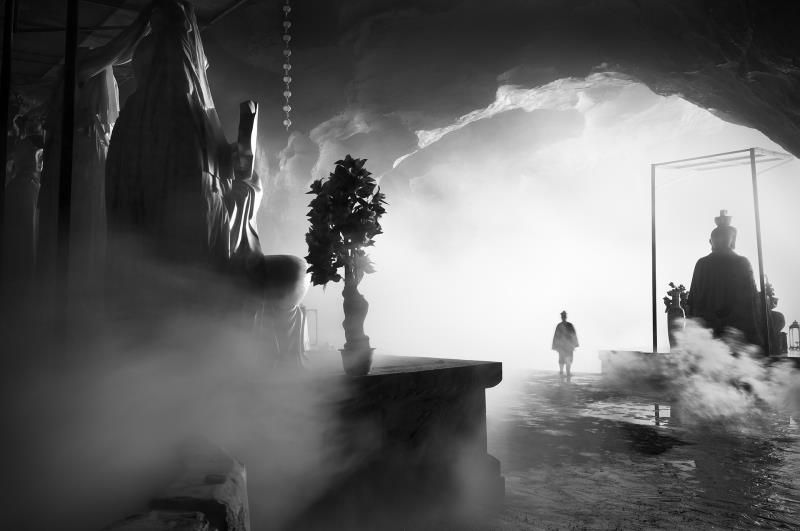 |
|
A photo on display in the Wang Dajun exhibition. [Photo by Wang Dajun/Provided to chinadaily.com.cn] |
A 10-day photo exhibition on Taoism, China's only indigenous religion, is being held at the National Art Museum of China in Beijing.
Organized by the China Photographers Association and China Art Photography Society, the exhibition, which ends on Nov 18, consists of 38 photos on Taoists in Taoist temples, Taoist rituals and Taoism among the people in Southwest China's Sichuan province and its neighboring Chongqing municipality.
The photos were chosen from nearly 200,000 pictures on Taoism taken in Sichuan and Chongqing by Wang Dajun, chairman of Sichuan Provincial Photographers Association, in the past 15 years.
Sichuan and Chongqing are the birthplaces of Taoism, an important part of the 5,000-year-old Chinese civilization.
In the late Eastern Han Dynasty (AD25-220), Zhang Daoling founded the Wudoumi Sect of Taoism on Mount Heming in Dayi County, Sichuan.
The Taoist culture has had a profound impact on the development of the traditional Chinese culture. Traditional folk activities pertaining to the Taoist culture are intact in Sichuan and Chongqing. Activities such as praying for rain, sunny days, happiness, harvest and peace is part of Taoist culture.
"My contact with Taoism was accidental. On the 28th day of the fifth month of 2003 in the lunar Chinese calendar, I experienced a temple fair organized by local people in the ancient town of Qijiang in Santai County, Sichuan province," Wang said.
"The scale of the temple fair, the rich variety of activities, the local flavor of the activities, and the enthusiasm of the local participants deep impressed me. It was not until then that I discovered that the Taoist culture was deeply rooted among people in Sichuan. So I gradually shifted my attention to the Taoist theme when I took photos," he said.
There are more than 100 Taoist temples in Sichuan and Chongqing. After visiting nearly 100 of them, Wang decided to focus on more than 20 Taoist temples and more than 10 places with distinctive Taoist culture.
"I have used the slow door, tripod and shutter release to enable the image to be a combination of the virtual and real. Posing has been required in line with the subject matter and subjective performance. Multiple exposures have been introduced to make the image have a strong sense of history," Wang said describing his shooting methods.
"Whether I take photos indoors or outdoors, I use the flash and slow down the shutter, using the flash to freeze the moment. And then I shake the camera when it is needed in order to use the dynamic image to express the mysterious feeling of Taoism," said Wang, who learned to take photos at in 1972, when he was 19.
The exhibition is titled Tao. Tao Wang Dajun Photography Art Exhibition. The first Tao in the name refers to the way of Oriental philosophy and the Taoist spirit of metamorphism. The second Tao refers to Wang Dajun's way as a photographer for more than 40 years and a summary and display of his photos pertaining to Taoism, said Wang Qingsong, curator of the exhibition.